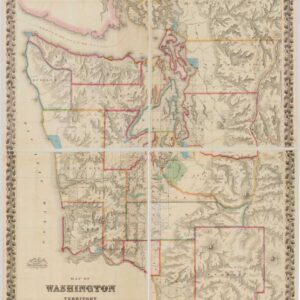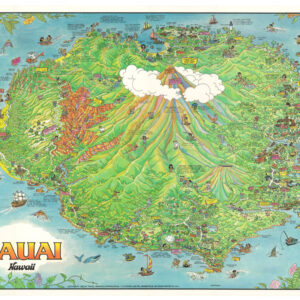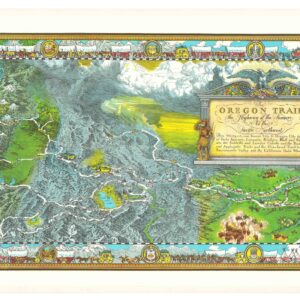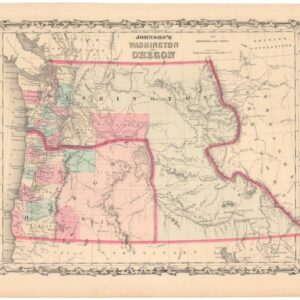A perfect capture of Washington’s dramatic volcanic peak, taken a few years before the catastrophic 1980 eruption.
Mount St. Helen’s Quadrangle (7.5 Minute Series)
$575
In stock
Description
This dramatic 7.5-minute quadrangle of Mount St Helens was produced by the United States Geological Survey (USGS) in 1975. The image is an orthophoto quad, which essentially means an aerial photograph in which the displacement caused by terrain relief and camera tilts has been removed. Unlike regular aerial photographs, orthophotos maintain a uniform scale, thus combining the image characteristics of a photograph with the geometric accuracy of a map.
The ‘quad’ part of orthophoto quad refers to the specific quadrant under inspection. Most USGS map series divide the United States into quadrangles bounded by two lines of latitude and two lines of longitude. A 7.5-minute quadrangle, such as this one, implies that an area spanning 7.5 minutes of latitude and 7.5 minutes of longitude is covered in the image. The orthophotographic quadrangles produced by the USGS are commonly named after the most prominent feature in the image, which in our case is nothing short of one of America’s most dramatic volcanic summits.
Context is Everything
Mount St. Helens is a prominent geological feature located in the state of Washington. It is part of the Cascade Range and stands within the Gifford Pinchot National Forest. The mountain’s peak reaches an elevation of 8,366 feet (2,550 meters), making it one of the highest peaks in the region. Geologically, Mount St. Helens is a strato- or composite volcano, which is characterized by its steep sides and symmetrical shape (as seen in the image). The volcano is part of the Pacific Ring of Fire, a zone of intense volcanic and seismic activity encircling the Pacific Ocean.
Culturally, the significance of Mount St. Helens is rooted in Washington’s rich Native American history. The mountain holds great spiritual and cultural importance to several indigenous tribes, including the Klickitat, Yakama, and Cowlitz. These tribes have traditionally held various beliefs and told stories of the sacred mountain, usually incorporating it deeply into cultural practices and narratives.
Mount St. Helens is known for its explosive eruptions caused by the buildup of gas and magma beneath its surface. In recent years, the most catastrophic eruption occurred on May 18, 1980. This event had a profound impact on the surrounding area, causing widespread devastation and loss of life. However, it also served as a catalyst for scientific research and significantly increased the understanding of volcanic processes. The eruption prompted leaps forward in volcano monitoring techniques and eruption prediction, leading to improved safety measures in volcanic regions worldwide.
Interestingly, Neatline’s example of the USGS orthophotographic quadrangle was taken a few years before this devastating eruption, making it a crucial piece of evidence for documentation of the devastation of the eruption and the subsequent changes in the landscape.
Cartographer(s):
Created by an act of Congress in 1879, the United States Geological Survey (USGS) is a scientific agency under the U.S. government whose purpose is to investigate, survey, and map the United States territory, including natural resources and any potential threats to the depicted habitat. The organization has evolved over time, gradually adapting to the progress of science and technology.
The USGS is the only science-based agency under the Department of the Interior, and its responsibilities fall within the disciplines of biology, geography, geology, and hydrology. The USGS is considered the best authority on domestic questions relating to these subjects, and often their maps will cover several or all of these themes in the same chart.
Condition Description
Very good. Pinholes in top corners. Printed on glossy photographic paper.
References



